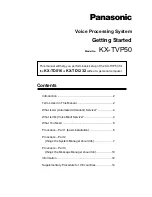
INSTRUCTIONS FOR INSTALLATION AND OPERATION: LI-ION BATTERIES 18V 1,5 Ah; 3,0 Ah; 4,0 Ah;
ORD. NUMBER: SH4931, SH4932, SH4933
Manufacturer and Importer: Steen QOS, s.r.o., Bor 3, Karlovy Vary, Czech republic
PLASTIC/CARTON PACKAGE REMOVE FROM CHILDREN'S DOSE, THREAT DANGER
DAMAGE!
Caution: Before using this product, read this manual and observe all safety rules and
operating instructions.
Original instructions for use.
GENERAL SAFETY CONDITIONS
ATTENTION! Read all of the instructions below. Failure to observe them may result in electric shock, fire, or injury. The
term "power tool" used in the instructions applies to all power tools irrespective of whether they are with or without a lead.
FOLLOW THESE INSTRUCTIONS
Using power tools
Do not overload the power tools. Use it only for the intended purpose. Proper selection of tools for the type of work
ensures that work is more efficient and safer. Do not use the power tool if its power switch does not work. Tools that can
not be operated with a network switch are dangerous and need to be repaired. Remove the plug from the power outlet
before adjusting, replacing accessories, or storing tools. This prevents the power tool from being switched on accidentally.
Keep the tools out of the reach of children. Do not allow tools to be used by people unqualified to operate it. Electric tools
in the hands of unskilled operators can be dangerous. Perform regular tool maintenance. Regularly inspect the tool for
any damage to the part. If the fault is detected, do not use the appliance and have it serviced by a trained person. Many
accidents are due to improper handling of the tool. Use power tools and accessories in accordance with the instructions
above. use tools in accordance with its intended purpose and consider working conditions. Use tools for work other than
that intended.
Repairs
Only repair the tool in the warranty period by an authorized workshop. In the event of improper handling, the warranty
conditions do not apply to possible damage. Repairs carried out by a trained person will ensure the proper safety of power
tools.
PREPARING FOR WORK
ATTENTION! All operations in this chapter must be carried out when the power supply is switched off - the battery must be
disconnected from the tool!
Safety precautions for charging the battery
Notice! Check that the mains, cable, and plug body are cracked or damaged before charging. Using a faulty or damaged
charging station and a power supply is prohibited! Only the original charging station and the power supply can be used to
charge the battery. Using a different power source could result in fire or damage to tools. Charging the battery can only be
done in a dry and closed place, secured against unauthorized persons, especially children. The charging station and
power cord are not allowed to be used without permanent adult supervision! If it is necessary to leave the charging room,
disconnect the charger from the mains by removing the power supply from the electrical outlet. If the smoke comes out of
the charger, a suspicious smell, etc., immediately unplug the charger plug from the mains socket!
The battery is supplied uncharged, so before charging the battery, charge the battery as described below using the
original power supply and charging station. Li-Ion batteries virtually do not display the so-called "patented effect", which
allows the battery to recharge at any time. It is recommended, however, to discharge the battery during normal operation
and then charge it to full capacity. However, if it is not possible to handle the battery with respect to the nature of the work,
then it must be done at least every few operating cycles. In any case, it is not allowed to discharge the battery by shorting
the contacts, as this would cause irreversible damage. It is also not permitted to check the battery charge status by
shorting the contacts and observing sparking.





































